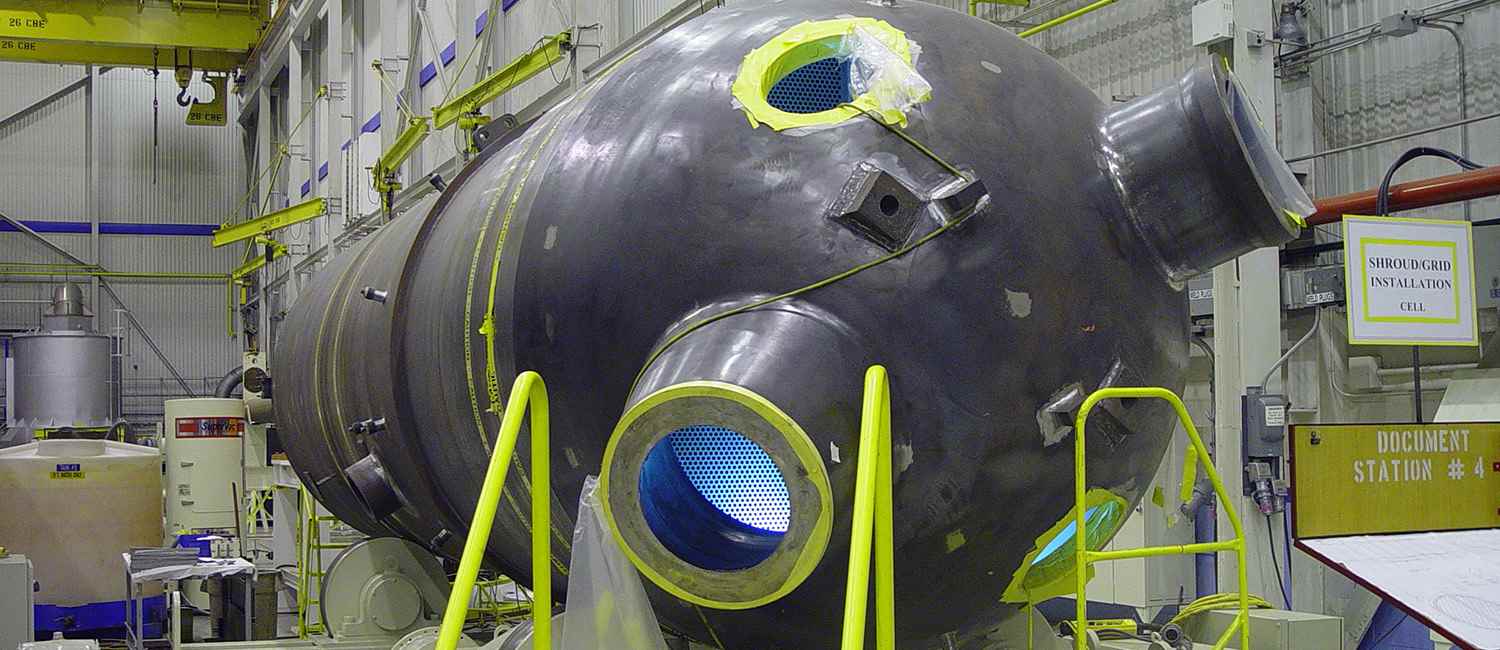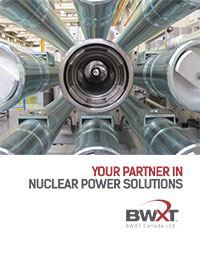At BWX Technologies, Inc. (BWXT), we recognize and meet each customer's unique requirements with a dynamic team effort thanks to the highly skilled and experienced professionals we employ. From engineering to manufacturing, every step of the process is conducted collaboratively.

ABOUT RECIRCULATING STEAM GENERATORS (RSG)
In an RSG, only part of the feedwater is converted to steam as the water passes through the unit. After the steam is separated from the water, the steam is sent to the turbine for power generation, while the water is returned to the tube bundle for additional steam generation. These steam generator designs use a vertical shell and an inverted U-tube heat exchanger bundle, with steam separation equipment located inside the top shell of the RSG.
We consistently meet or exceed RSG design objectives:
- Create "form, fit, and function" design to simplify licensing
- Retain all terminal points
- Overall performance consistent with existing steam generators
- Structural compatibility with Nuclear Steam Supply System (NSSS)
- Design for maximum reliability
- Minimize tube residual stress
- Avoid flow-induced vibration
- Assure high steam superheat under all operating conditions
- Prevent loose parts
- Facilitate inspection and maintenance
- Assure all terminal points, outside dimensions and overall performance is consistent with existing steam generators and reactor requirements
- Achieve high circulation ratios
- Eliminate crevices and potential flow stagnation areas
- Use non-rigid tube supports
- Maintain pressure-boundary integrity during seismic and burst pipe events


